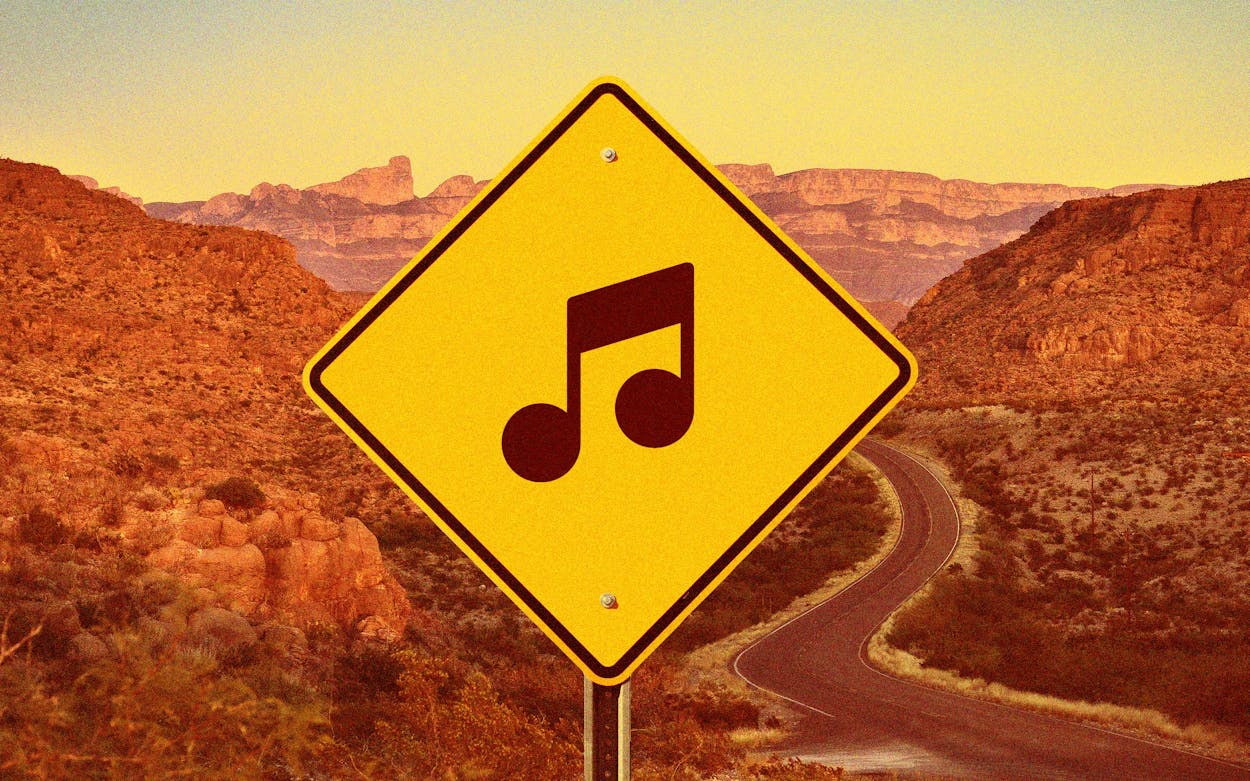Way back in the Cretaceous era, whenever I took a road trip, I would play a cassette or CD by an artist from the city I was visiting. It was an experiment to see if the songs would deepen my understanding of the place, and, vice versa, to see if the experience would enrich my understanding of the music. The latter proved especially true as I passed by local landmarks and played, say, the Texas Tornados in San Antonio, T-Bone Walker in Dallas, and Ray Sharpe in Fort Worth. Why would the exercise result in this resonance? I have no idea, but more prominent ears than my own have noticed the phenomenon, and I don’t make the rules.
Then came Spotify. I had been wanting to make playlists for our major cities for some time, but it wasn’t until recently—using the excuse of Texas Monthly’s Travel Guides—that I finally, and enthusiastically, went down time-consuming rabbit holes, calling up friends and asking for their expertise, working my way through the catalogs, and coming up with two- to seven-hour playlists for Austin, Big Bend, Dallas, Fort Worth, Houston, and San Antonio.
Many listeners will not care about methodology, and I don’t blame them. But for those who want to play the Texas Monthly city playlist game, consider the starting point: how do you define a song that belongs to a certain region? It’s trickier than it seems. My first inclination was to include only songs from artists who had lived in the city in question, but almost immediately I had to ignore that guideline, because I wanted to include Question Mark and the Mysterians’ “96 Tears,” which was put out on a San Antonio label and sure sounds San Antonio (that organ!), even if the band members left the state as little kids when their parents migrated to Michigan. Then there were musicians who moved around—what to do with them? And what about Texans whose work didn’t really reflect their hometowns? Do Van Cliburn and Betty Buckley really belong on a Fort Worth playlist? Do you want to hear a song from Cats on your road trip? You see what I mean. It gets weird.
As I went on, I included a few tracks that were about a city, more than of a city, because in some cases that seemed fun; so yes, the Flatlanders’ “Dallas” made the cut. Because of the Big Bend area’s sparse population, a big chunk of songs on that playlist are sung by artists from other parts of the state, such as George Strait and Lyle Lovett, with titles like “West Texas Town” and “West Texas Highway.” I also included a few major tunes that were recorded in certain cities, because why wouldn’t you want every opportunity to hear Robert Johnson perform the songs he recorded in San Antonio and Dallas? These are milestone tracks, and ignoring them felt wrong.
What resulted are (duh) highly subjective playlists, selections I like plus stuff that seems important for the sake of the city’s mosaic, such as San Antonio native Christopher Cross’s tranquilized maritime hit inspired by Canyon Lake, “Sailing.” Now that I’m more or less finished and reflecting on the undertaking as a whole, a few things have struck me.
The first is how each city has contributed such rich and different genres: Fort Worth’s blues period, San Antonio’s Tex-Mex evolution, Austin’s seventies country and post-SXSW rock, Houston’s hip-hop. It’s one thing to read the history on paper, as I have many times; it’s another to spend a few hours listening to a single city’s creations and hear its artists take all the ingredients of that place and make something familiar yet new. Check out Kam Franklin and Azraq and Kareem Samara’s version of Lightnin’ Hopkins’s hit “Baby Please Don’t Go,” or Eve Monsees and the Exiles’ Austin blues song “Lonely Lonely Nights,” and you’ll see what I mean.
The second is that a lot of the songs on each playlist relate to one another, forming a kind of biography of a city’s recorded-sound history. This is quite a thing to consider, especially when genres in any Texas urban center are so varied. Take San Antonio: the way the accordion tracks its way through songs by Steve Jordan and the Jimenez brothers, and now through ones by the punk band Piñata Protest and the rapper Carlton Zeus. And there are tie-ins and collaborations all over the place: Beyoncé showing up on a Megan Thee Stallion track, Tobe Nwigwe shouting out to Beyoncé and Slim Thug, and André 3000—an Atlanta artist who (stay with me here!) had a child with Erykah Badu (on the Dallas playlist, of course, and with Robert Glasper on the Houston one)—appearing on the UGK track.
These are just snapshots from 2023 looking back. The compilations aren’t biblically thorough, but they should get the 66 percent of Texans who live in the Triangle from our driveways to any one of these destinations. If you’re driving east from El Paso, north from Brownsville, or south from Amarillo, you can always play them again. With time, inevitably, the playlists will grow, but if I made them much longer right now, you’d have to hear “Memory”—and everyone has a limit.
Dallas
San Antonio
Houston
Austin
Fort Worth
Big Bend
- More About:
- Music








